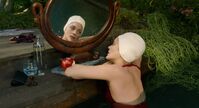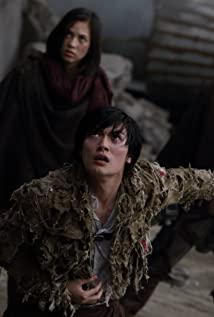Annette has many more personal emotions that the author self-dissects compared to the sacred car dealership. This time, I accidentally told a well-behaved story and tried the whole song and dance form, but it is still not difficult to find the key signs of Karax: myself, oblique/sideways mirror movement, motorcycle, tunnel, body expression , film history...and reflexivity. The glitch-like intervention and the sudden entry of the aria in the previous work can be seen as a distance between the image and the living landscape in the virtual system. Annette interweaves two types of play-in-play structures. The first is the stage. In the previous work, there were also pictures showing the audience's viewing state. Henry's stand-up scene has to be mentioned here. In two full-length shows, the actors, the characters, and the audience all involve each other. The interaction between the audience and Henry is like the ceremonial viewing of the Rocky Horror Show. The fourth wall is completely eliminated in the talk show art. The behavior of the audience reshapes Henry's role, and also makes him continue to play the role of a talk show actor and actor. Jumping up and down by myself, revealing the remaining "truth" in the interlaced gaps. The second is the in-picture screen. Car TVs, dash cams, monitors… these screens appear repeatedly in Karax’s films, forming the way technology itself perceives or manipulates the world. Ann dozed off in the back seat, the news on the screen in front of her mixed with her dreams, reconstructing the plot and laying the groundwork for the murder of her wife. The progress of Henry and Ann's relationship is also always briefly carried over by the shoddy gossip alerts on the screen. Different from the past, Annette emphasizes the intuitive and disconnected experience between the real and the fictional, and especially highlights the "fake". Whether it's the rigid mechanical puppet child Annette, the gaudy daily news, or the repeated "laugh" on the audio that commands the audience to laugh, these all exaggerately reflect the hyper-real environment created by postmodern media. Those "plastic textures" that are ignored. Anyway, I really liked the opening part.
View more about Annette reviews











